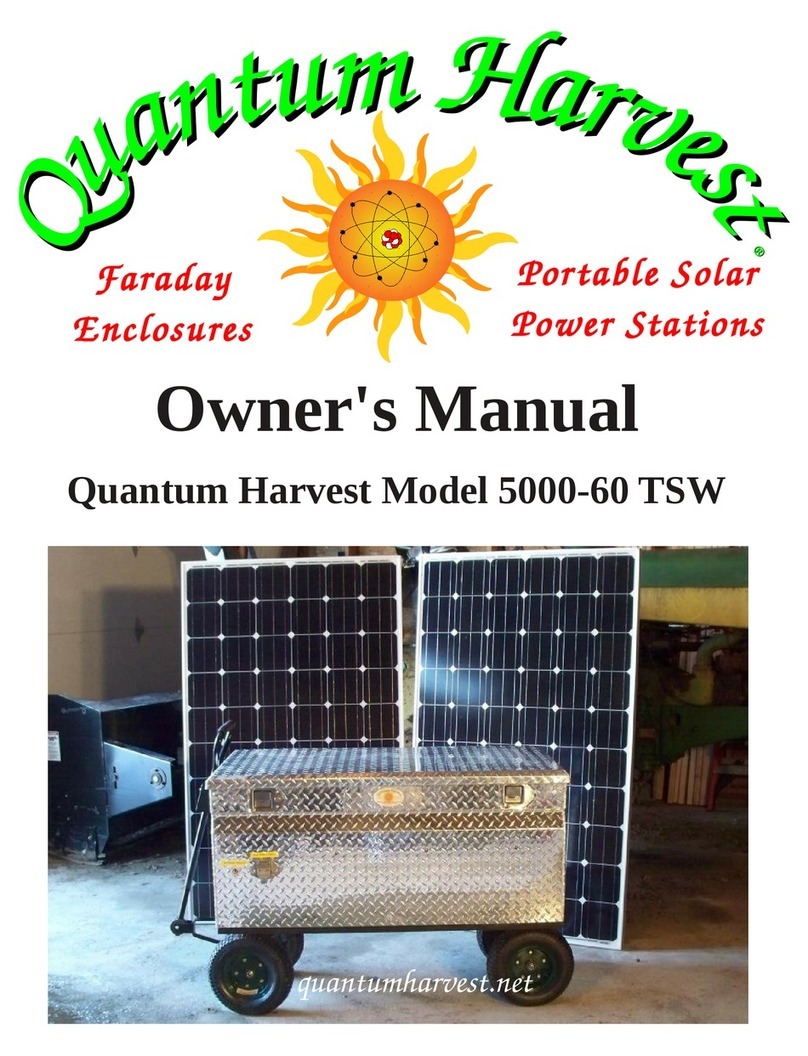
*A quick note on EMP
An EMP, or Electro-Magnetic Pulse is a devastating phenomenon that, while harmless to living
things, absolutely destroys anything electronic. t consists of extremely powerful electromagnetic fields
building and collapsing hundreds of thousands of times per second. This induces potentially huge
electric currents in anything that conducts electricity, causing components connected to said conductor
to burn out. An EMP can be caused by either a deliberate, high-altitude nuclear warhead detonation,
or can be caused naturally by a solar event called a Coronal Mass Ejection, or CME.
All Quantum Harvest power units are built into a specially designed enclosure, more
properly called a Faraday Cage, named after Michael Faraday, an early pioneer in
electromagnetic research. The purpose of a Faraday cage is to intercept and divert
electromagnetic energy away from the box's interior, thus protecting the contents.
The principles involved are fairly simple, but the proper execution is critical. n order
for the enclosure to be useful, it must have a door, but any opening larger than a square
centimeter or so allows too much energy to penetrate the interior, thus defeating the purpose of
the Faraday cage.
The solution to this conundrum is to gasket the door with a special type of conductive
gasket, mated to a copper or silver strip that is electrically bonded to the main box. The key is
to have very low electrical resistance between the door and the enclosure, with no gaps. This is
not as easy as it sounds, and requires special materials designed specifically for this
application.
My experience with Faraday apparatus comes from 8 years experience with very
powerful industrial machines called RF welders. These machines use extremely powerful and
focused bursts of electromagnetic energy to weld and form plastic parts. These machines
basically create a local EMP every time they fire, and it is critical that stray energy be confined
and dissipated safely to avoid damage to other sensitive electrical machinery.
==========================================================
Table of ontents
Specifications.......................................................................................Page 3
Note on Batteries.................................................................................Page 4
Section 1............ apacities and recommended usages.....................Page 5-6
Section 2............ ontrols/ ircuit Protection Devices.......................Page 7-9
Section 3.............External Ports and onnectors..............................Page 10
Section 4............Operation and Routine Maintenance.....................Pages 11-13
Section 5.............Using Booster ables..............................................Pages 14-16
Section 6.............Maintenance and Repair........................................Pages 17-38
Section 6A.............Power Board...............................................Pages 17-19
Section 6B............ ontrol Panel...............................................Page 21
Section 6 .............Batteries......................................................Pages 22-38
ontact Information...........................................................................Page 39
Warranty Information........................................................................Page 40
Addendum A................Wiring Schematic.........................................Page 41
Addendum B.................Replacing solar panel diodes......................Page 42-43
2




























